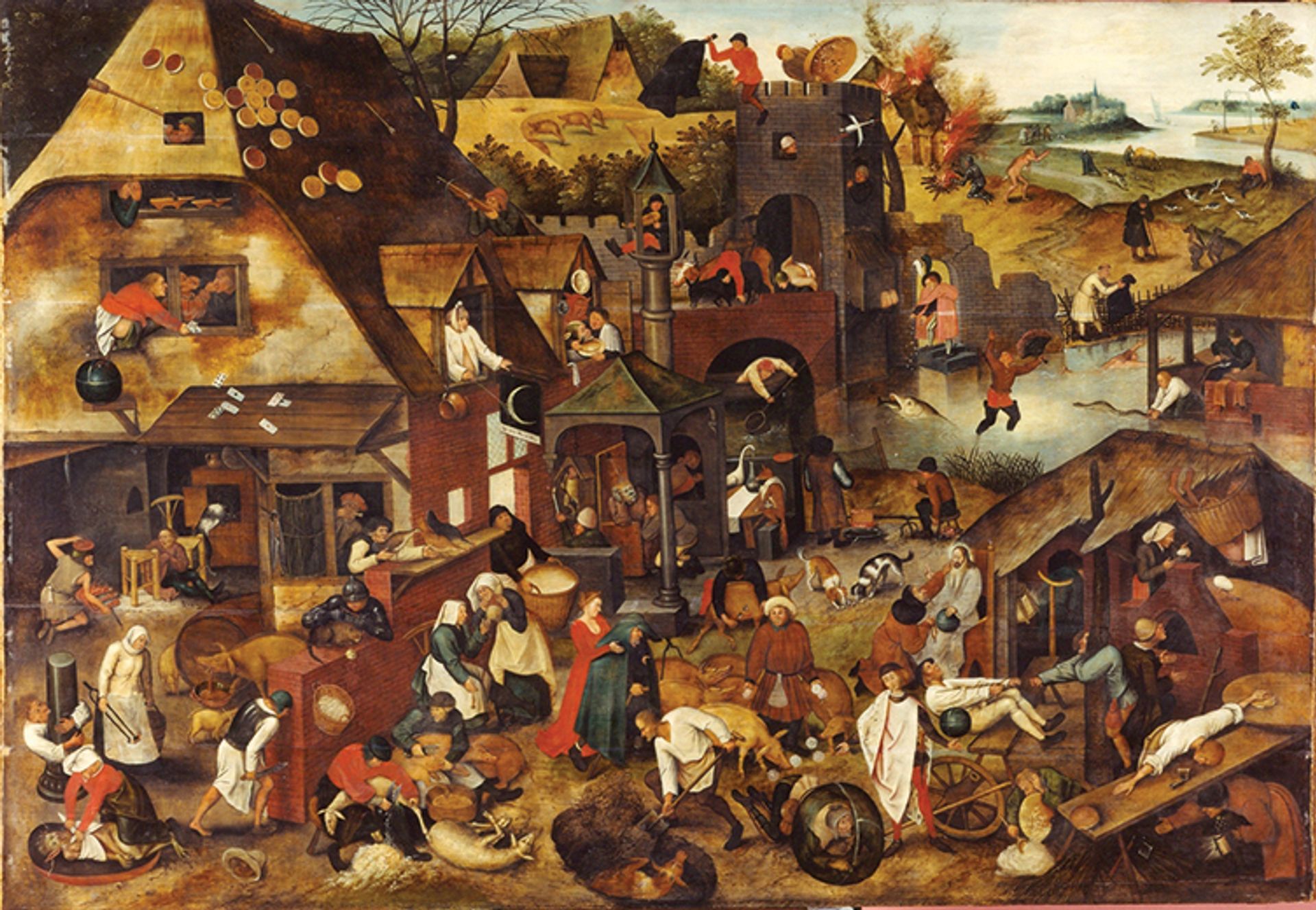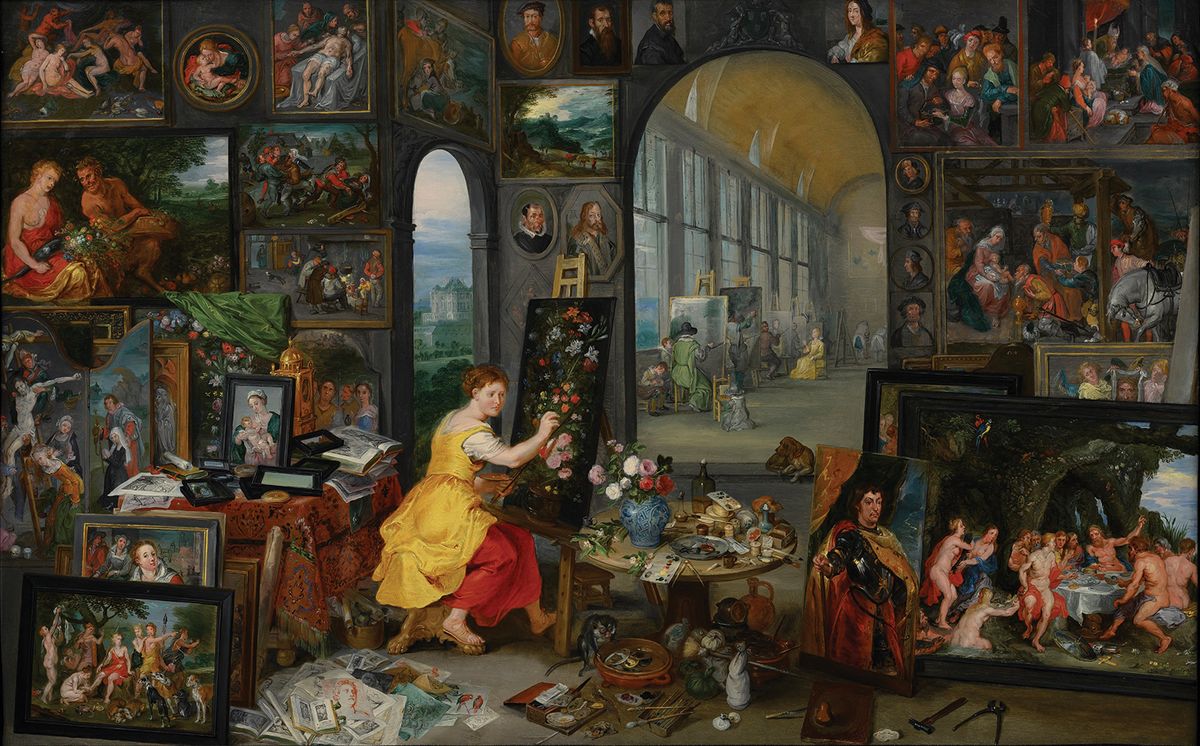If you look carefully at the teeming detail in Jan Brueghel the Younger’s Allegory of Painting, you can see exactly where the artist ranked his family’s work in the hierarchy of 17th-century European painters. The painting, on a long-term loan to the Het Noordbrabants Museum in ’s-Hertogenbosch from the private JK Art Foundation, is central to Brueghel: The Family Reunion, the first exhibition covering five generations of the remarkable Brueghel family of artists—including bringing the women members out of the shadows.
Among scores of paintings depicted on the walls, Jan painted the portrait of his grandfather, Pieter Bruegel the Elder, hanging beside that of Michelangelo, and his father, Jan Brueghel the Elder, beside that of Albrecht Dürer. As the curator Nadia Groeneveld-Baadj observes in her catalogue essay, Jan has ranked the members of his own family “on a par with the most eminent Italian, German and Netherlandish artists of the 15th and 16th centuries”.

Pieter Brueghel the Younger’s Netherlandish Proverbs (1607), based on an original composition by his father Stadsmuseum Lier
The small, respectable town of ’s-Hertogenbosch (also known as Den Bosch) is famous in the Netherlands for going bonkers once a year in a wild carnival celebrating the nightmare images of its most famous son, Hieronymus Bosch. When the museum organised a major exhibition of his work in 2016, it famously had to borrow every single work, since none remain in the town. This time it is in a better starting place, owning a large collection by various members of the Brueghel tribe—visitors will want a family tree to hand—which will be supplemented by loans from international museums including the Musée du Louvre in Paris, the Museo Nacional del Prado in Madrid, and both public and private collections in the United States.
Highlights include a portrait of Clara Brueghel, who commissioned artists as the director of an immensely wealthy women’s religious foundation in Mechelen, and a recently restored floral garland by Anna Maria Janssens, which the curator hopes may lead to correct identification of other works wrongly attributed to men of the family. Another key work, the wonderfully enigmatic The Magpie on the Gallows (1568), is coming from the Hessisches Landesmuseum in Darmstadt; it is one of the pieces by Pieter Bruegel the Elder where something much darker shows behind his famously jolly dancing peasants.
A missing matriarch
Recent Brueghel exhibitions have been immensely popular, including the 2019 Kunsthistorisches Museum show in Vienna on Pieter Bruegel the Elder, which was its most successful ever. Groeneveld-Baadj says they wanted to do something different, examining the political, economic and even climate conditions that shaped the family fortunes—and above all bringing its women into the light. However, the exhibition will have no works by one of the most interesting characters: the matriarch Mayken Verhulst, mother-in-law of Pieter the Elder, grandmother, teacher and mentor of Pieter the Younger and Jan. She was herself a celebrated artist, but none of Verhulst’s works in watercolour are known to survive, and she will be represented only by reproductions of a grave commanding portrait, which, to the sorrow of the curator, is too fragile to travel.
- Brueghel: The Family Reunion, Het Noordbrabants Museum, ’s-Hertogenbosch, until 7 January 2024


